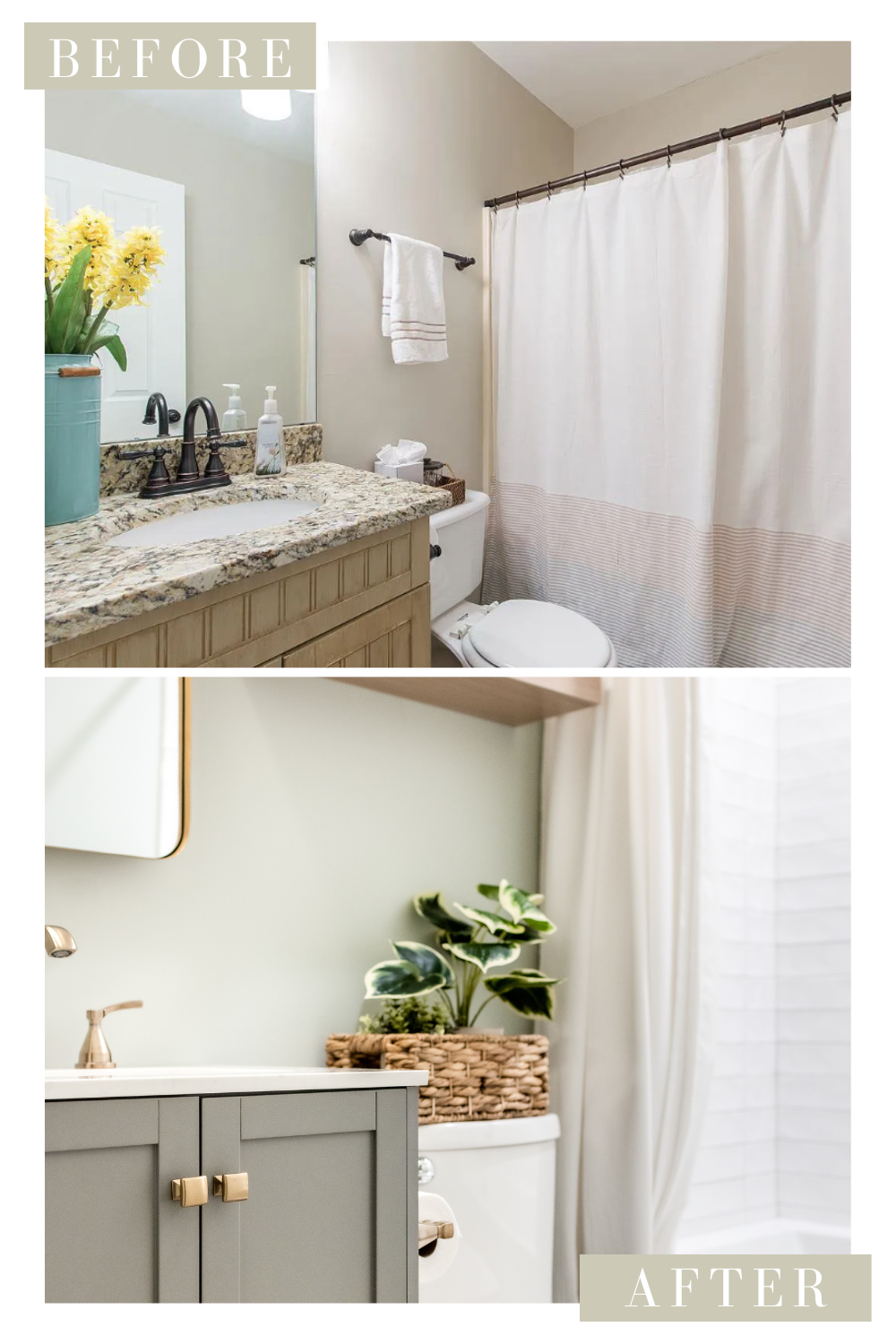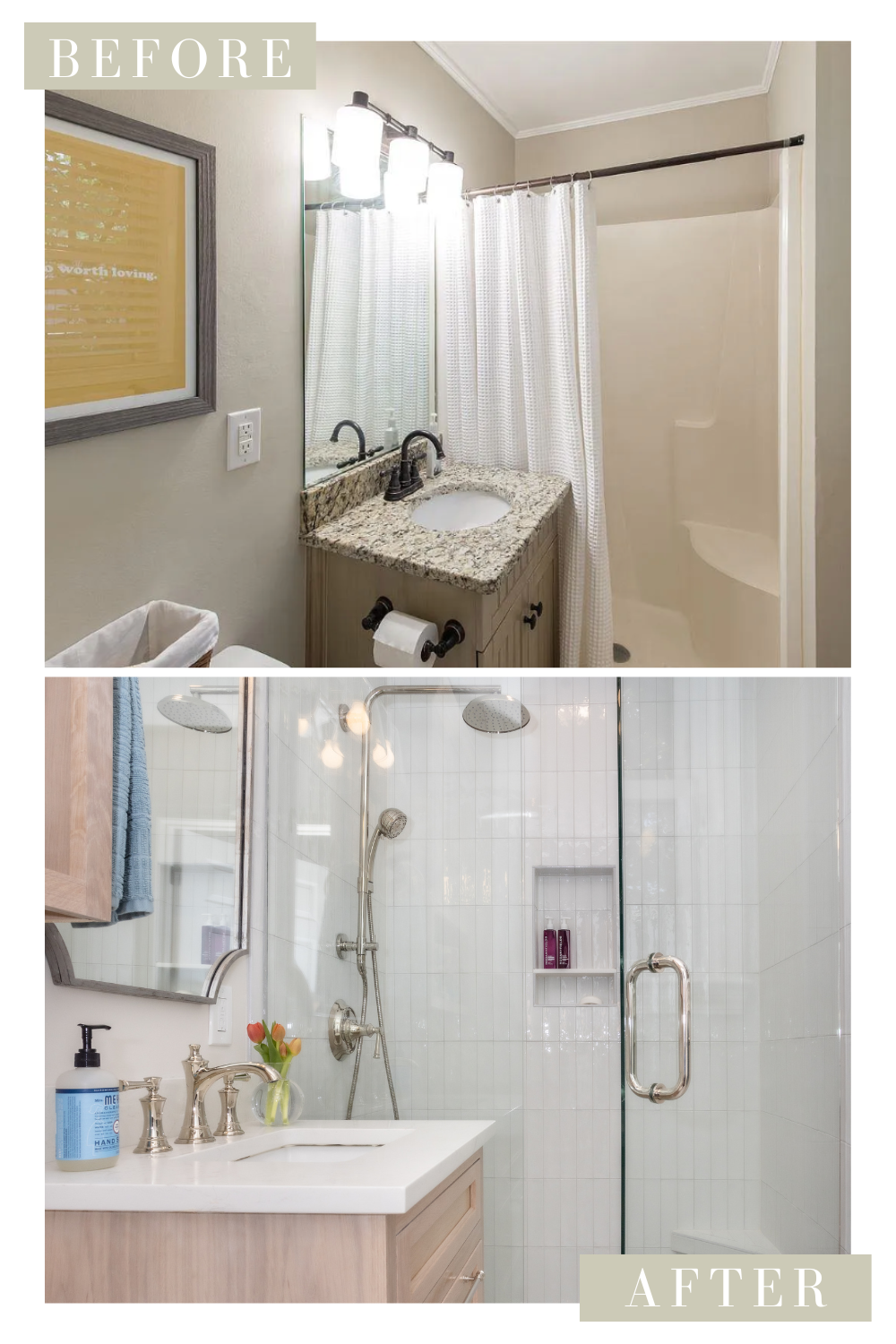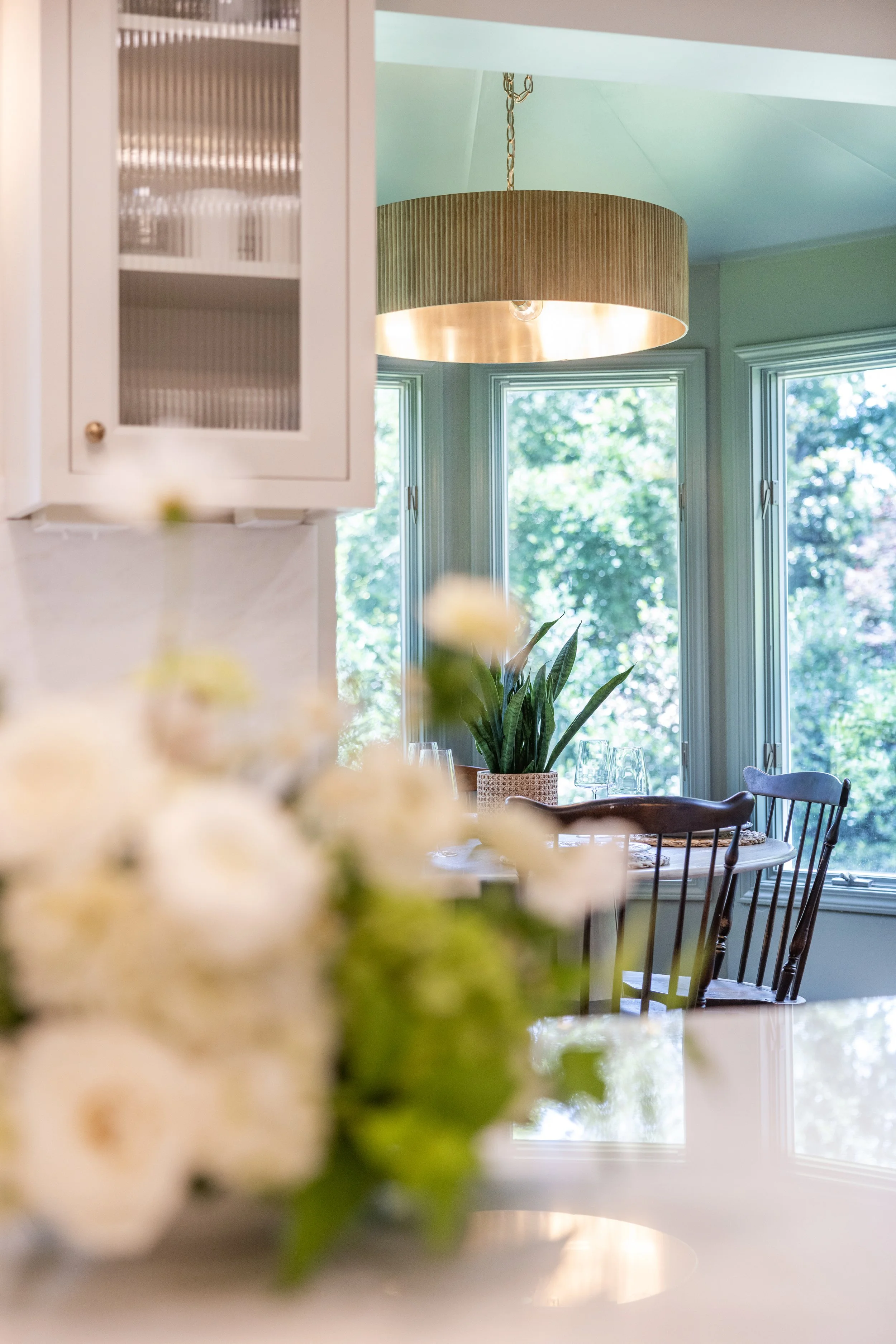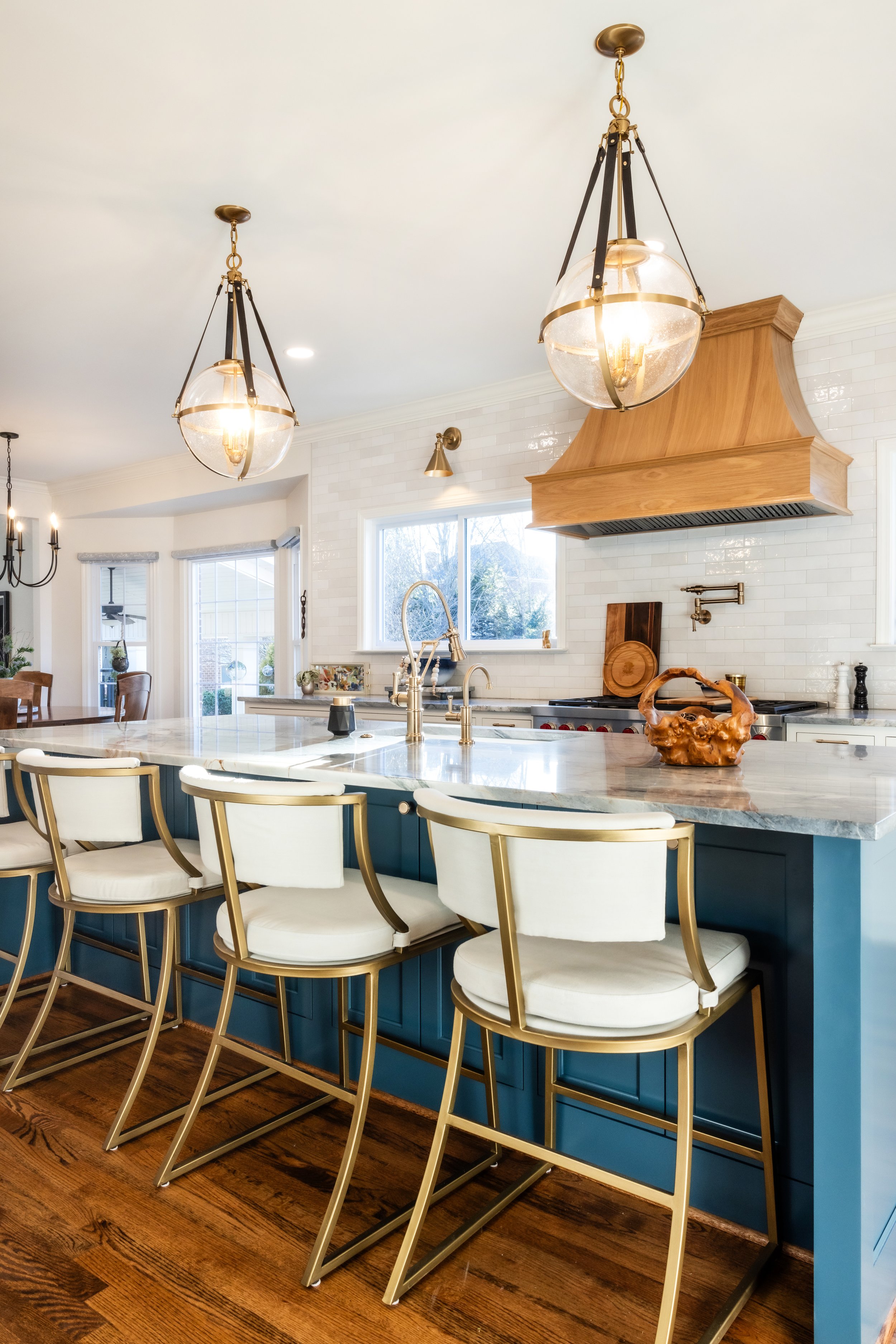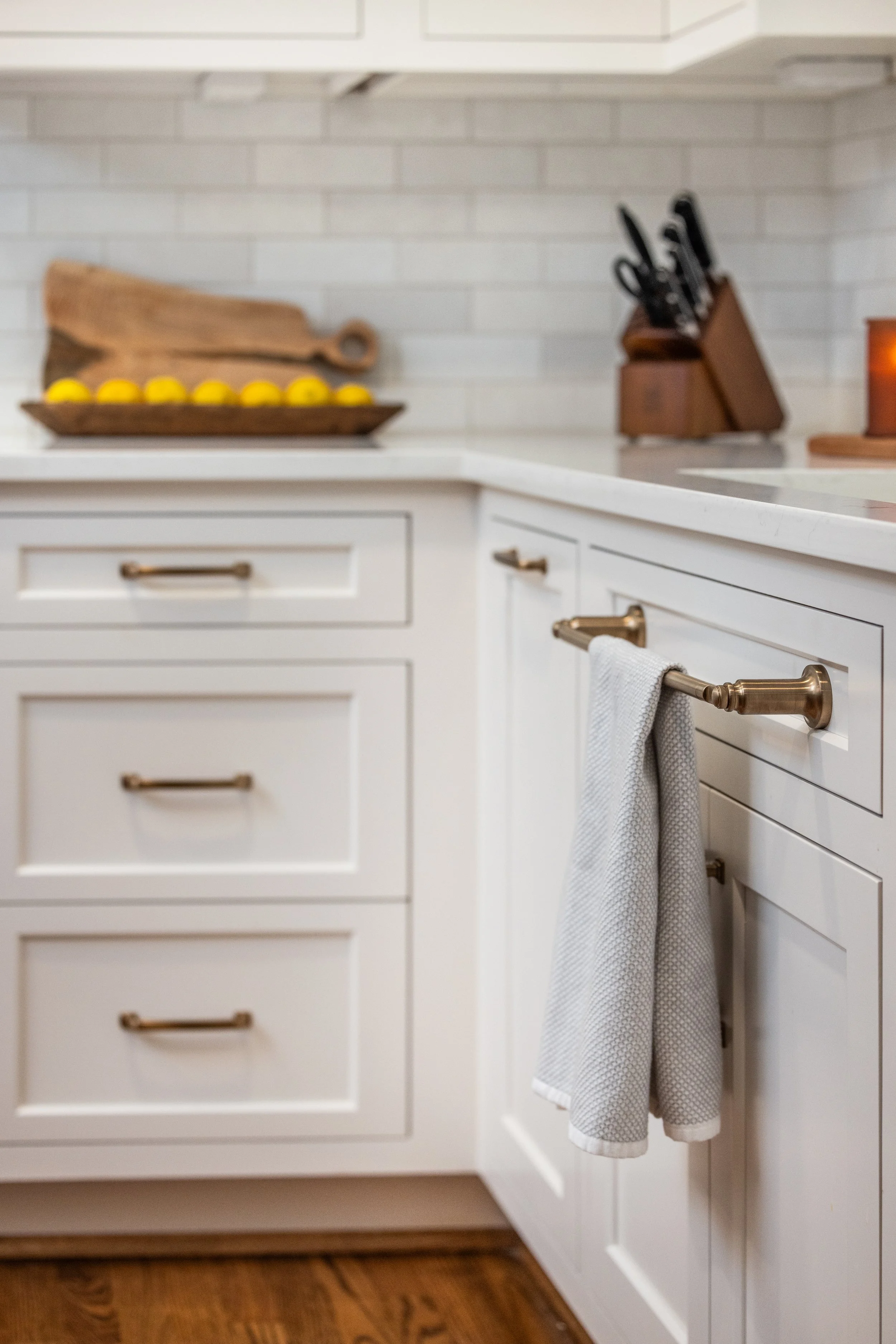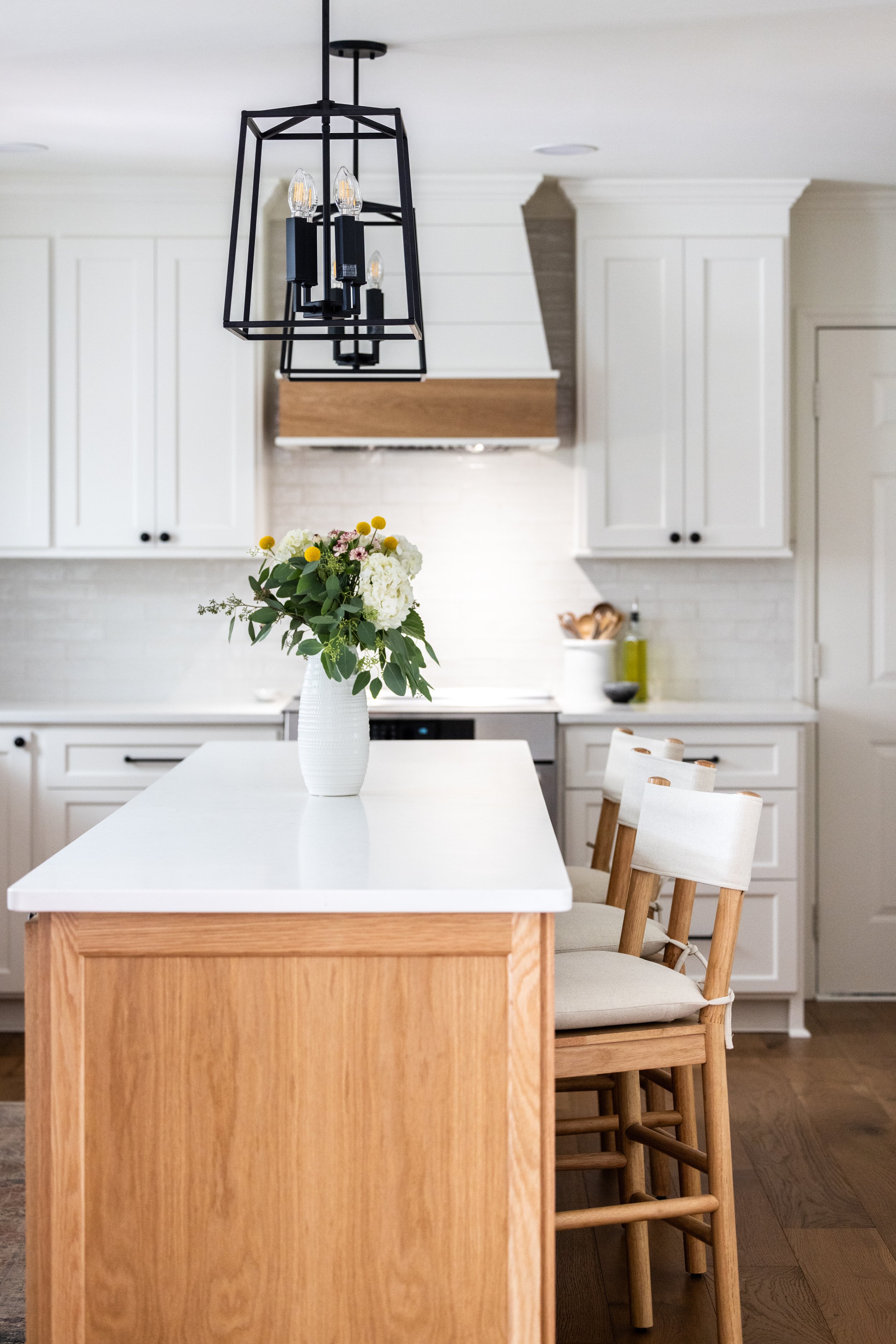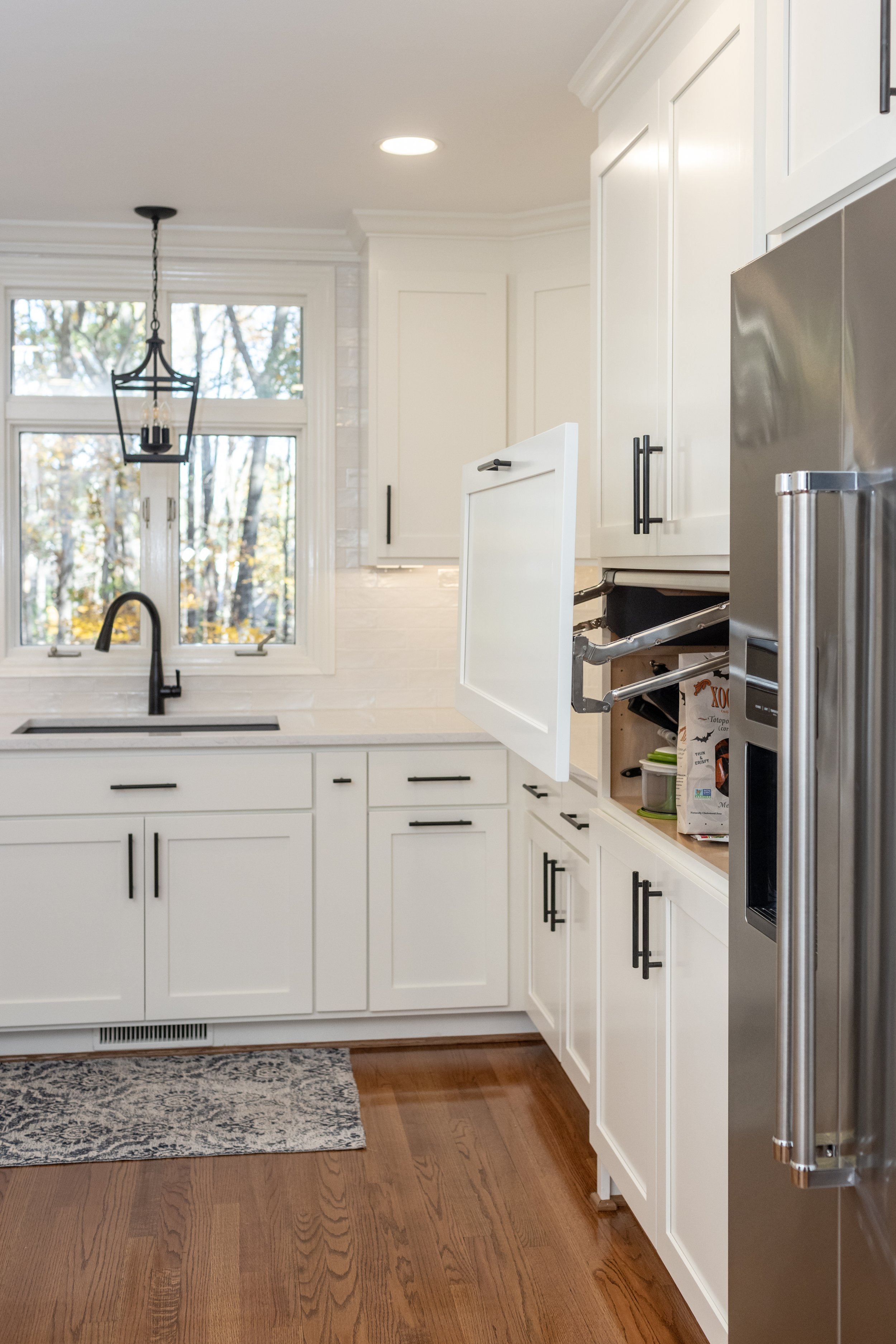Style Guide: Organic Modern Design
Organic Modern design combines the minimalism of modern design with warm, natural elements often found in boho decor. It’s no wonder that organic modern design has caught the attention of many for its combination of simplicity with natural elements to create harmonious visual appeal. In this post we’ll dive into what organic modern design is, how organic modern design differs from other trends, and the five essential elements for creating an organic modern look in your own home.
What is Organic Modern Interior Design?
Organic Modern Design seamlessly integrates the minimalism, functionality, and clean lines of modern design with natural materials such as stone, wood, metal, and leather. The juxtaposition of sleek modernism with imperfect organic elements creates a balanced and visually appealing living space.
Five Key Features of Organic Modern Design
Natural Materials
Organic Modern design prioritizes the use of natural materials such as wood, stone, and leather. These materials bring warmth and texture to the space, creating a sense of coziness and comfort.
Clean Lines
Unlike traditional organic styles that may incorporate more ornate and curvy forms, Organic Modern design focuses on clean, straight lines. This minimalist approach creates a sense of openness and simplicity.
Neutral Color Palette
Neutral colors like whites, grays, and earthy tones dominate the color palette of Organic Modern interiors to create a soothing and timeless atmosphere.
Minimalist Furnishings
Furnishings in Organic Modern design are characterized by their simplicity and functionality. Pieces are often sleek and unadorned, allowing the natural materials to shine.
Biophilic
Plant lovers rejoice! Organic Modern spaces are characterized by bringing outdoor elements inside. This can include large windows, indoor plants, and nature-inspired artwork.
How Organic Modern Compares to Other Design Trends
Social media sites like Pinterest and Instagram are a great design resource for homeowners and remodelers. However, the influx of photos and information can make deciding on a design aesthetic difficult. Let’s take a look at how Organic Modern differs from two popular home trends: Transitional and Modern Farmhouse.
Organic Modern vs Transitional Design
While Organic Modern and Transitional design share some similarities, they are distinct in their own right. Transitional design combines traditional and contemporary elements to create a distinct look that bridges the gap between classic old world style and modern functionality.
Here are a few ways Transitional design differs from Organic Modern:
Material Choices: Transitional design incorporates a wider range of materials, including both natural and synthetic options. Organic Modern design, on the other hand, emphasizes natural materials.
Color Palette: Transitional design often includes a broader spectrum of colors, whereas Organic Modern design leans towards neutral tones.
Furnishings: Transitional design incorporates traditional furniture styles with modern elements or accessories, while Organic Modern design favors minimalist and contemporary furnishings.
Decorative Elements: Transitional design seeks a balance between various design elements, whereas Organic Modern design leans more towards a minimalist and uncluttered look.
Organic Modern vs Modern Farmhouse
Modern Farmhouse Design adopts traditional rustic charm and pairs it with minimalistic, contemporary accents. This differs from transitional because the furniture styles in transitional design have finishes that are typically more polished and timeless. Modern Farmhouse Style is characterized by its simple, yet rustic furniture and finishes.
Material Choices: Modern farmhouse design prominently features rustic materials such as reclaimed wood and distressed metals, whereas Organic Modern design uses a more refined selection of natural materials.
Color Palette: While both styles may incorporate neutral colors, modern farmhouse design often includes bolder, contrasting colors for a more rustic feel, while Organic Modern stays true to a subdued palette.
Furnishings: Modern farmhouse design leans toward traditional and antique-style furnishings, whereas Organic Modern design favors sleek, modern pieces.
Decorative Elements: Modern farmhouse design incorporates more decorative elements like barn doors and exposed beams, whereas Organic Modern design relies on a minimalist and clutter-free approach.
Our Client’s Organic Modern Bathroom Remodels
Our clients came to us with a home in Greenville South Carolina’s revitalized North Main Area. The home’s bathrooms are proof that square footage is no hindrance to style. Our client chose a subtle Organic Modern approach to her double bathroom renovations.
Natural Materials
Our client selected high-quality materials in various finishes to renovate the home’s bathrooms. The hexagonal marble floors give the spaces a durable, easy to clean flooring. Likewise, polished quartz countertops on both vanities are a low maintenance, quality choice for the high-traffic bathrooms.
Clean Lines
Our client chose to install the same 2.5x10 white tile in both showers, but mix up the pattern. The guest bathroom tile is laid in a horizontal stack, whereas the primary bathroom has a vertical stack pattern. The tile’s natural texture keeps the stacked patterns from appearing too stark. Likewise, the marble floorings’ hexagonal pattern mixes up the lines without overwhelming the space.
Neutral Color Palette
Both bathrooms incorporate a neutral color scheme. The guest bathroom’s walls are a serene greenish-gray in Sherwin Williams Sea Salt. The primary bathroom’s walls in Benjamin Moore’s Classic Gray are balanced by the natural wood vanity.
Minimalist Furnishings
Each bathroom has a simple vanity with inset doors and drawers. The guest bathroom incorporates natural wood open shelves to balance the gray vanity. Likewise, the primary bath’s natural wood vanity balances out the gray in the space’s walls and floors; giving the calming grays a warm counterbalance.
Biophilic
Neither space has windows for natural light to enter, making the incorporation of plants for a biophilic touch more difficult. However, even just a touch of artificial greenery can make the world of a difference in creating a warm and inviting space.
Guest Bathroom Gallery
Guest Bathroom Before and After
Primary Bathroom Gallery
Primary Bathroom Before and After
In conclusion, Organic Modern Interior Design represents a harmonious fusion of nature's beauty with modern accents. By incorporating natural materials, a neutral color palette, minimalist furnishings, biophilic design, and clean lines, you can create a living space that exudes warmth, sophistication, and a timeless appeal. While it shares some similarities with transitional and modern farmhouse styles, Organic Modern design stands out as a unique and captivating choice for those seeking a contemporary, yet natural living environment.
Selections
Photos by Kim Deloach Photography.
Vanity countertops are polished Barrington Quartz from Upstate Granite Solutions.
Tile selections made through Clayton Tile.
Hexagonal floors are 2” x 2” polished carrara marble from MIR Mosaic, Marbella Collection.
2.5 x 10 shower tiles in Bianco Lux from Emil Ceramica, Totalook Collection.
Primary Bath:
Walls are Benjamin Moore Classic Grey (OC-23)
Trim is Benjamin Moore White Dove (OC-17)
Mirror inAntique Silver by Signature Hardware, Ulric Collection
Plumbing fixtures and bathroom accessories in Polished Nickel finish by Signature Hardware, Beasley Collection.
Vanity light in Polished Nickel, by Capital Lighting.
Cabinet pulls in polished nickel by Top Knobs, Ormonde Collection.
Guest Bath:
Plumbing fixtures and accents in champagne bronze by Delta, Stryke Collection.
Cabinet knobs in honey bronze by Top Knobs, Transcend Collection.
Vanity light in aged brass by Capital Lighting.
Walls are painted Sherwin Williams Sea Salt (SW 6204).
Trim is Benjamin Moore White Dove (OC-17).













